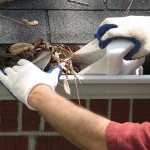Fall Home Maintenance Tips – Get Your Atlanta Home Ready For Winter
It’s time to give our Atlanta homes a Fall tune-up. Everything from your furnace to the gutters needs to be made ready for the long cold winter months. Ok, I know all of you northerners are saying, it’s Atlanta – don’t you mean long mild winter months? Hey, winter is cold wherever you are! To help you cover all the bases, we’ve come up with a handy fall-maintenance checklist. Consult it every year and your home will thank you – actually many of these items need to be checked in late spring as well for season appropriate service such an AC check up.
Check your heating equipment before the beginning of cold weather – I like to know that my furnace will come on while its still in the 70’s! Have a qualified heating and cooling contractor clean and service your furnaces and if you have a heat pump the outside units as well. Clean heat pump coils operate more efficiently, and a seasonal service call will keep the system working at peak performance levels.
Check and replace your furnace filters every month. Clean filters not only keep your house cleaner, they reduce your utility bills because your HVAC system does not have run as long to make your home comfortable as when the filters are clogged with dust.
Change batteries on smoke and carbon monoxide detectors – don’t worry that your batteries may still have some charge and your “blowing $6” – this can save your life. As Nike says – Just Do It!
Clean out your gutters as soon as the leaves have all fallen – sometimes this has to be done twice. This is very important – clogged gutters can overflow and over time seep into walls and cause serious water damage to structural members. Check for loose or leaky gutters. Improper drainage can lead to water in the basement or crawl space. Make sure downspouts drain away from the foundation and are clear and free of debris. Hire a company if your home is a two story.
Low areas in the yard or next to the foundation should be filled with compacted soil. Winter rains can cause yard flooding, which can lead to foundation flooding and damage from settlement.
Use a screwdriver to probe the wood trim around windows, doors, railings and decks. Make wood repairs now before the winter rains do more damage to the exposed wood. For small pockets of damage or rot, Borden makes very good wood filler that is available at most homes centers, and Zinsser makes a great exterior spackle called MH Ready Patch that outperforms vinyl spackling compounds – home centers and paint stores sell this product. (No, I don’t get a commission from either company.)
Examine putty and caulk joints around exterior window panes and window and door trim and re-putty or caulk as needed to keep out water and air. Ensure that weather stripping on doors and windows creates a good seal.
From the ground, examine roof shingles to see if any were lost or damaged during summer storms. If your home has an older roof covering, you may want to start a budget for replacement. The summer sun can really damage roof shingles. Shingles that are cracked, buckled or loose or are missing granules need to be replaced. Flashing around plumbing vents, skylights and chimneys need to be checked and repaired by a qualified roofer.
Examine the exterior of the chimney for signs of damage. Have the flue cleaned and inspected by a certified chimney sweep. A burning fireplaces in winter is charming – burning your house down is not! Have your flue checked for creosote buildup at least every two years if you use the fireplace regularly and never burn pine wood in a fireplace, and only burn coal if the fireplace is rated for coal and has the proper coal grate – most are not rated for coal.
Inspect concrete slabs for signs of cracks or movement. All exterior slabs should drain away from the home’s foundation. Fill cracks between your foundation and items that abut the foundation such as: porches or entrance stairs, sidewalks, and driveways with a concrete crack filler or silicone caulk.
Locate and turn off the shut off valves for all outside hose faucets, then disconnect garden hoses, and drain the faucet and the hose for the winter.
Check your gas-powered lawn equipment to make sure they are ready for storage – empty the gas tanks and run the equipment until the gas is completely used up before storing it away.
As the Boy Scouts Say, Be Prepared! Winter Emergency Tips for the Unexpected!
When the power goes out, or the ice builds up and you can’t get out of your driveway it can be inconvenient and in some cases dangerous. The following are preparedness items you might want to stock up on.
Candles – heavy pillar candles that can burn for days – never leave a candle burning unattended or while you sleep.
Rock salt – to keep your steps, porches, and driveways clear of ice and help prevent dangerous falls. If you have a steep driveway – a few 10 lb bags of rock salt can be the difference in being ice bound in your home, or being able to leave.
Sleeping bags – if you don’t have multiple heavy down comforters, even cheap Wal-Mart 30-40 degree bags can be way better than piles of blankets when the power is out comfort in winter – they can even be a life saver.
Of course there are emergency food ration kits to support an individual for up to a year for those so inclined – search on Google. You could also stock up on some canned goods. One great and pretty inexpensive option for a few days to a week is to buy freeze dried Mountain House meals that you just add boiling water to the foil pouch and wait 5 minutes. I have had the Spaghetti, Chili Mac, and Beef Stroganoff while backpacking on the Appalachian Trail and these taste (and look) great – I suggest you avoid military rations. You can get Mountain House products at Wal-Mart, REI and other outdoor outfitters. It helps to have a way to boil water or heat food – I have MSR isobutane camping/backpacking stoves to boil water.
Water – I store 10 one gallon jugs of distilled water in my basement for emergencies. In closing, you never know how long the power will be off…
In our famous Atlanta snow jam of 1983, (should have been called ice jam) I was visiting my grandmother down in Griffin on her farm and was watching an interesting Jacques Cousteau deep sea diving special on TV and the power went off. After about 45 minutes of waiting for the power to come on I began to get annoyed…little did I know that the power was going to be off for 7 full days and nighttime temps would plummet to 30 below zero 30 miles south of Atlanta! Fortunately the farm was set up to endure that event much better than the average suburban Atlanta home – old fashioned oil burning lamps, a full supply room of home grown canned vegetables, and my grandmothers awesome stews and cobblers, and two coal burning stoves kept us far more comfortable than hundreds of thousands of other folks who were caught in the snow jam – we were actually quite cozy in a strange “back to the 1800s” time warp. I got a real appreciation for how wonderful electricity is thank you Mr. Edison – I was lucky I was there and not back at my then home in the burbs of Stone Mountain.
posted in New Posts | Comments Off on Fall Home Maintenance Tips – Get Your Atlanta Home Ready For Winter


